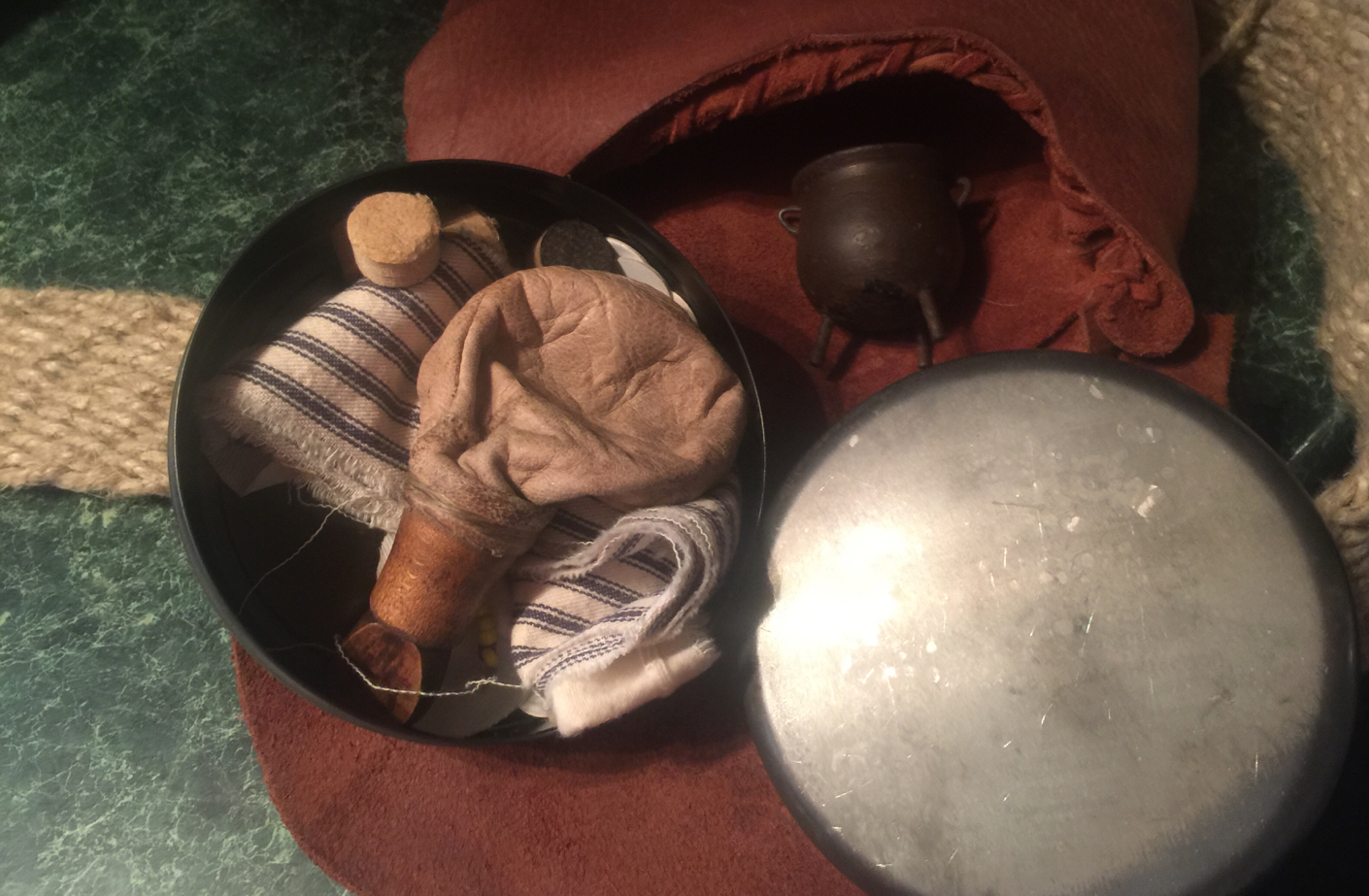I realize
@Pee Wee 's post was tongue in cheek, but it does beg the question: Are you interested in replicating what a southern frontiersman would have carried in his pouch 200 years ago, or are you asking what is recommended for a modern-day blackpowder shooter to carry, to maintain his rifle? Also, since the OP has a southern mountain rifle (SMR), does he want accouterments specific to the culture that produced that particular type of rifle, or would generic gear be adequate?
If you really want to know about what was used by authentic southern frontiersmen, you
need this book:
View attachment 173628
This was recently reprinted by the Contemporary Longrifle Association (CLA), and is a compilation of some earlier works by the author, Jim Webb. It is available through the CLA store for fifty bucks, which is not unreasonable in today's world:
Sketches of Hunting Pouches Book
Realistically, people used to keep things pretty simple. Here is a pertinent quote about the Texas frontier, from
Pioneer Days in the Southwest, by Goodnight, Dubbs, Hart, et al.:
View attachment 173631
On the frontier, the "hunting pouch" was usually called a shot pouch or bullet pouch. Sometimes just a "pouch," if the context was clear, and I did see "hunting pouch" used one or two times in the period literature. In fairness, I did see "shot bag" one time. Some authors did mention the contents. Bullets were usually left loose in the pouch...they would gravitate to the bottom, where they were easily found. Out west, a lot of smaller items were fastened to the strap, outside of the actual pouch. This is Ruxton's description of Old Bill Williams in
Life in the Far West:
“In the shoulder-belt which sustained his powder-horn and bullet-pouch were fastened the various instruments of one pursuing his mode of life. An awl, with deer-horn handle and the point defended by a case of cherry-wood carved by his own hand, hung at the back of the belt side by side with a worm for cleaning the rifle; and under this was a squat and quaint-looking bullet-mould, the handles guarded by strips of buckskin to save his fingers from burning when running balls, having for its companion a little bottle made from the point of an antelope’s horn, scraped transparent, which contained the “medicine” used in baiting the traps.” (Description of Old Bill Williams – page 144)
Jim Webb devoted an entire chapter in his book to showing the contents of actual antique southern hunting pouches he had examined. Here are a few sample pages:
View attachment 173635
View attachment 173636View attachment 173637
The images pretty consistently show a powder charger (sometimes two, with slightly different capacities), a worm or wiper, and a mould. I don't think they really did much casting at trailside, but a little "bag mould" would not take up much space, and if left in the pouch, would always be available when needed. Rifles were not always of standard calibers, and getting a new mould to cast balls for your rifle could be a problem. Mr. Webb devoted some space to knives, which he believes were normally carried on the belt. A lot of the pouches he illustrates have a wire vent or nipple pick suspended from the strap. Pouches for percussion guns usually had a tin of caps, or sometimes a little cap-horn. Mechanical cappers were evidently not used in the southern mountains. One other item which seemed pretty common, oddly enough, was a simple powder funnel. The quote from Texas (above) mentioned patch material, and spare flints for flintlock shooters. Mr. Webb also illustrated a hank of flax tow, which would have likely been carried in the pouch.
The pouches he illustrated were almost all very simple, with one compartment. I think he only showed one that had an inside pocket.
So, getting back to the original point, do you want to carry just authentic, documented kit when you are out for a day with your southern mountain rifle, or are you comfortable carrying some modern conveniences? It's up to the individual. Just for the record, I tend to carry too much.
Best regards,
Notchy Bob





















